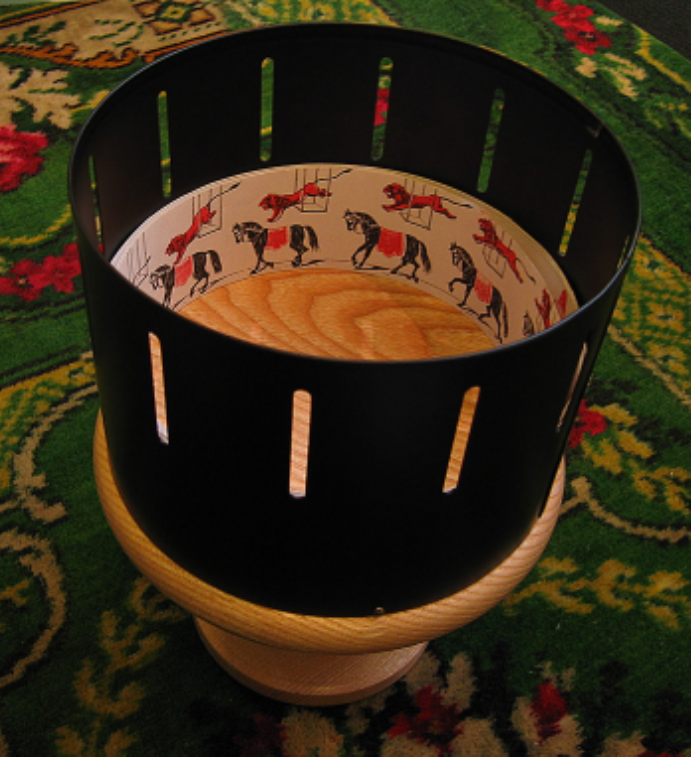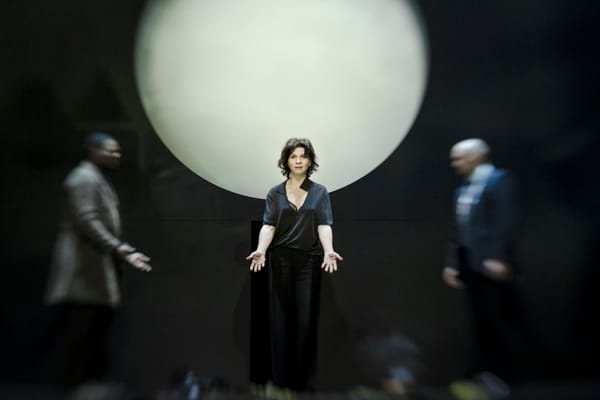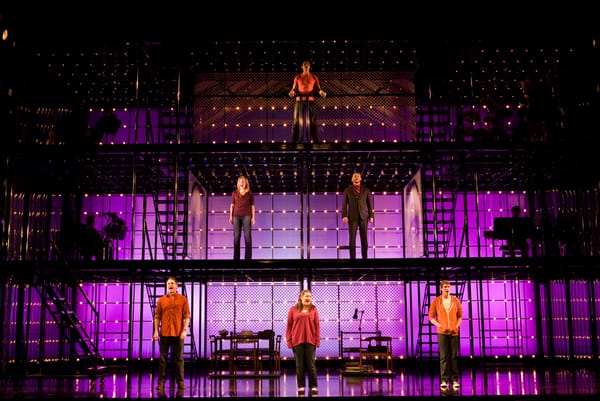Once more into the lens: The History of Projection
Ellen Mathieson takes you through the last one hundred and fifty years of projection, film, and sound in the cinema industry

The field of optics was founded during the scientific revolution, leading to large improvements in lenses. Photographic paper was first developed in the 19th century, around the same time that the first phonographic sound recordings were happening. Once these three existed, it was only a matter of time until they were combined to make the first moving pictures.
The very simplest form of moving image is one that has been made by every primary school child for the past century, the zoetrope. A cylinder with vertical slits along the side, with series of images pasted onto the inside, zoetropes would then be spun to create the illusion of movement. These were very popular with Victorian children and adults alike, and are still a popular gift.
Once these three existed, it was only a matter of time until they were combined to make the first moving pictures.
The first true projector was the zoopraxiscope, invented by Eadweard Muybridge in 1879. It is based on a similar concept to the zoescope, projecting images from a set of rapidly rotating glass disks. It was the zoopraxiscope that created the first moving picture of something in real time, rather that using staged photographs. The first example was of a galloping horse, and was actually developed to see if a horse had all four feet on the ground at the same time whilst galloping. Early models had the images painted onto the glass, while later ones would print the outlines and then do the colouring by hand.
It is thought that this device is one of the main inspirations for the kinetoscope, the first commercial film exhibition system, where the moving pictures would be viewed by by looking through a spyhole. Though the original concept was suggested by Thomas Edison, it was actually mostly developed by one of the employees in the Edison labs, William Dickson. They also created the kinetograph, one of the earliest film cameras that could be used to create films for the kinetoscope, and a few years later released the kinetophone, combining the kinetoscope with a phonograph, the first film-sound system.
Celluloid was first invented as Parkesine in 1856, and was made into photographic film by thinly slicing blocks of celluloid then using heated pressure plates to remove the slice marks. These were then coated with a photosensitive gelatin emulsion. This process was perfected in 1888. It was a 380mm wide strip made by this process that was used in the kinetograph. However this was too stiff to meet the needs of motion picture photography, so more flexible celluloids were developed to be used by 1889.
It was the Blair Camera Company that supplied the Edison labs with film stock. Originally they only supplied film that was 40mm wide, which would then be cut and perforated to 35mm wide with four perforations that allowed the film to be moved through the camera. Eventually Blair began supplying film that was already cut to size. The size and perforations were patented by Edison, forcing the other film producers in the US to create 68mm film and a friction feed method to move it through the camera. In 1902 a court decision invalidated the patent claim, allowing anyone to use the Edison format, as has been happening in Europe where no patent had be filed originally.
At this time there were many projectors based on similar concepts, moving the film past a lens which would focus light onto the film, which would then be projected onto a screen. However different companies would build them slightly differently, so the film would have to perforated slightly differently depending on what equipment a cinema would have. The Edison format was the dominant version, and this was chosen by the Motion Picture Patents Company in 1909 as the official standard, along with a 1.33 aspect ratio. This standardisation had an enormous impact on the film industry, as this meant that all projectors were built to the same specification, so for example a film recorded in the US could then be played anywhere in the world.
It was around this time that celluloid began to be replaced, due to the fact that it had the unfortunate problem of spontaneously combusting above 150°C, a temperature that could easily be reached in a projector. It had the added problem of creating its own oxygen supply as it burnt, meaning that even if placed underwater the film would continue to burn. Acetate cellulose film was developed to combat this issue, first being produced in 1909, with several revisions over the next few decades.
Even if placed underwater the film would continue to burn
The safety of acetate film meant that there was a large boom in the home cinema industry. In 1923 Kodak released 16mm wide film, as a cheaper alternative to 35mm. This was followed up by a standard double 8mm wide film in 1932 as an even cheaper alternative. This worked by first filming on one side of the film, then flipping the film in the camera and filming onto the other side of the film. These would then be cut in half and spliced together to form a continuous 8mm film to be projected. In 1965 an improved version known as Super 8 was released, which had far better visual quality and did not need to be reloaded. This was quickly taken up by the public, and remains a very popular medium for amateur filmmakers. It is usually converted from film to video to be more easily worked with, a process known as telecine.
The soundtrack was still mostly sound-on-disk at this time, being played on separately on a phonograph at the same time at the film played.The first method to put the soundtrack directly on the film was phonofilm, which was patented in 1919. This recorded sound directly onto the film from a microphone as a series of parallel lines. This would then be turned back into sound at the other end this. It was mostly used to film musical numbers, especially opera singers, and political speeches. Though the sound quality improved over the years, it could never match the quality of the sound-on-disk systems and was no longer used by 1929.
Disney, in association with RCA Records, also attempted to create a sound-on-film system for called Fantasound for the original release of Fantasia in 1940, which had a multi-channel soundtrack recorded on a separate strip of film. This never really took off as many cinemas did not pay the expense to update their equipment. This meant that not many cinemas could play Fantasia as originally intended, and is thought to be a large contributing factor in Fantasia’s poor original run.
the sound quality improved over the years, it could never match the quality of the sound-on-disk systems
The earliest films were all in black-and-white, but in 1906 the first colour process was developed. Known as Kinemacolor, it used commercially from 1908-14 and worked by photographing and projecting a black-and-white film behind alternating red and green filters. The second commercially process was the very widely used Technicolor, which was used to develop films in Hollywood until 1952. It’s distinctive saturated colouring was found in such classics as the Wizard of Oz and Snow White and the Seven Dwarves.
A large problem with many film prints throughout the twentieth century is what is commonly known as “vinegaring”. When films are stored in humid conditions the acetate turns into acetic acid causing it to turn brown and become brittle; not only does this mean the film can no longer be played, it also degrades the image quality mean the film can no longer be copied either. This has caused the loss of many film prints as it an irreversible process, and led to the development of cellulose nitrate and other film types throughout the late twentieth and early twenty first centuries.
Sound-on-film, based on the Academy optical system, worked by having an audio signal as two lines running parallel with the film. The lines grow thinner or wider depending on the magnitude of the signal. A light shined from a lamp called an exciter is passed through the film, and the intensity is detected by a photosensitive element which is then turned into sound. This was originally black-and-white, but due to the pigments being environmentally unfriendly this was switched to a cyan dye in the early twenty first century. As cyan dyes do not let infra-red light through, the exciter was switched to a red coloured LED or laser, which are backwards compatible with earlier prints. The Academy optical system suffered from somewhat poor audio fidelity. This problem was solved in 1975 with the introduction of Dolby Stereo, a system that was widely adopted by cinemas world-wide and used with Star Wars and Close Encounters of the Third Kind in 1977. Dolby Stereo was supplanted by the Dolby Digital AC-3 format and the first film to use the system was Batman Returns in 1992.
soon in the future these digital projectors could themselves become obsolete
In 2002, newly produced digital projectors were tried out in cinemas. These had issues with pixelisation in some scenes. By 2006, this had been solved, and the projectors themselves became much smaller. Only a couple of years later cinemas began to make the switch to digital, and the film distributors followed suit, with fewer and fewer films being printed on 35mm. In 2013 it was estimated at that 92% of US cinemas had switched, and the last of the large UK cinemas, Vue, had converted. By January 2014 most major UK distributors began distributing films only in digital formats, with Disney and Warner, the last two companies stopping soon after. Now only directors with enough clout in the film world can get their films printed on 35mm, and it is thought that Christopher Nolan’s Interstellar could be the last film in the UK to be printed in the format.
It is possible that soon in the future these digital projectors could themselves become obsolete, with large amounts of money going into research into laser projection. This would mean that the films would be projected much brighter, with a greater range of colours.
The current main issue with this is that a vast cooling system is needed to keep the projector at a constant temperature as this leads to a colour change, obviously a large problem with film projection. However lasers are being developed that are based on different technologies that are much easier to keep cool meaning the challenges of keeping the laser at a constant temperature would be fewer. Until then, the screen belongs to digital.








